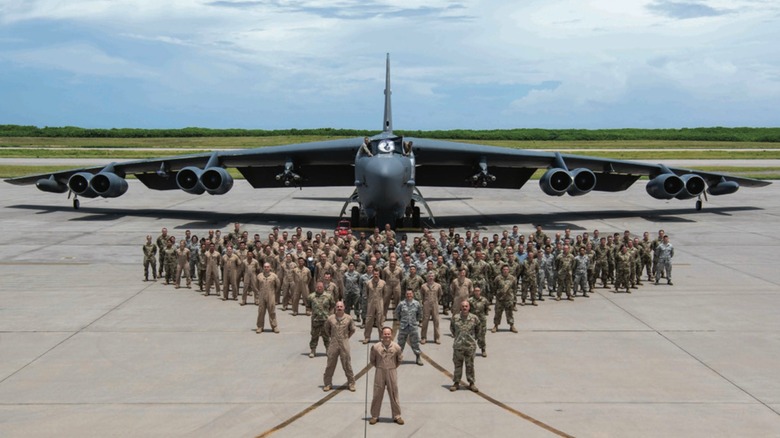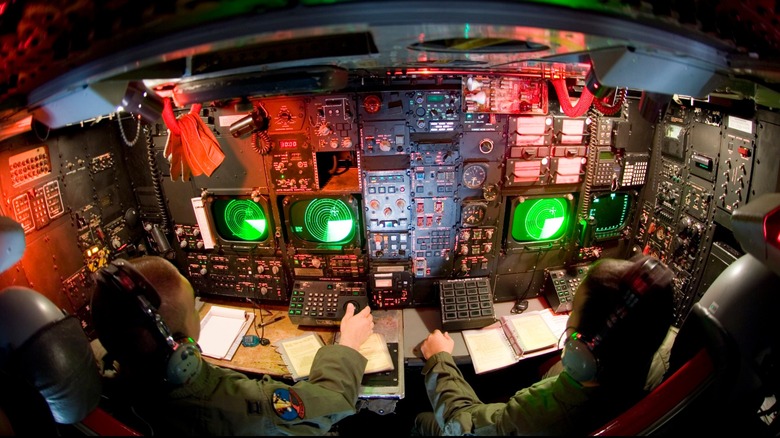How Big Is The Crew On A B-52 Bomber?
The eight-engine B-52 Stratofortress is one of the most storied strategic bombers in the United States Air Force's arsenal. The aircraft, commonly referred to as the BUFF (Big Ugly Fat Fella), first flew in the 1950s, and numerous upgrades and modernization programs have kept it flying ever since. The massive aircraft boasts a considerable range of 8,800 miles. With the capacity to carry up to 70,000 pounds of mixed ordnance, they're used to deliver plenty of pain to the enemy.
While many strategic jet bombers in service today such as the B-2 Spirit and the forthcoming B-21 Raider only require two personnel to operate, the B-52 needs three additional crew members. The crew is comprised of the pilot, an aircraft commander who is also a trained pilot, a navigator, someone to manage the radar, and an electronic warfare officer. They all work in tandem to ensure the B-52 gets to where it needs to be, delivers its payload, and returns to base safely.
The B-52 isn't the most comfortable Air Force asset to fly, with crew members having to crouch over their workstations, latrines having little privacy, and few options for food available. This is unfortunate because it's not uncommon for them to remain onboard for up to 24 hours at a time. In one instance, a B-52 crew even went 33 hours without landing. However, the House of Representatives aims to make the aircraft more comfortable for the crew in its 2025 defense policy bill.
What is it like to be a part of a B-52 crew?
When the B-52 first entered the inventory, the gunner was originally situated in the tail of the aircraft. At some point, the gunner was moved forward with the rest of the crew, but this position was later eliminated altogether in favor of a defensive fire-control system. In the current B-52 layout, the crew is situated such that the pilot and copilot sit in the upper deck, while the lower deck consists of two bombing navigation system operator positions and a workspace for the electronic warfare officer. This is dubbed the "Battle Station" (pictured), and each crew member has their own workstation with various controls, radar screens, communications equipment, and much more. Future models will eliminate the radar position as well, reducing the crew to four.
Up in the cockpit, the commander and pilot sit beside one another in the same manner as a commercial jetliner or similar aircraft. They maintain constant communication with the crew via radios in their helmets. Additionally, they're responsible for getting the bomber to its target location, maintaining flight operations, and overall command of the mission. Despite being one of the oldest military jets still in service, the B-52 and its crew will continue to serve U.S. strategic interests well into the 2050s.

